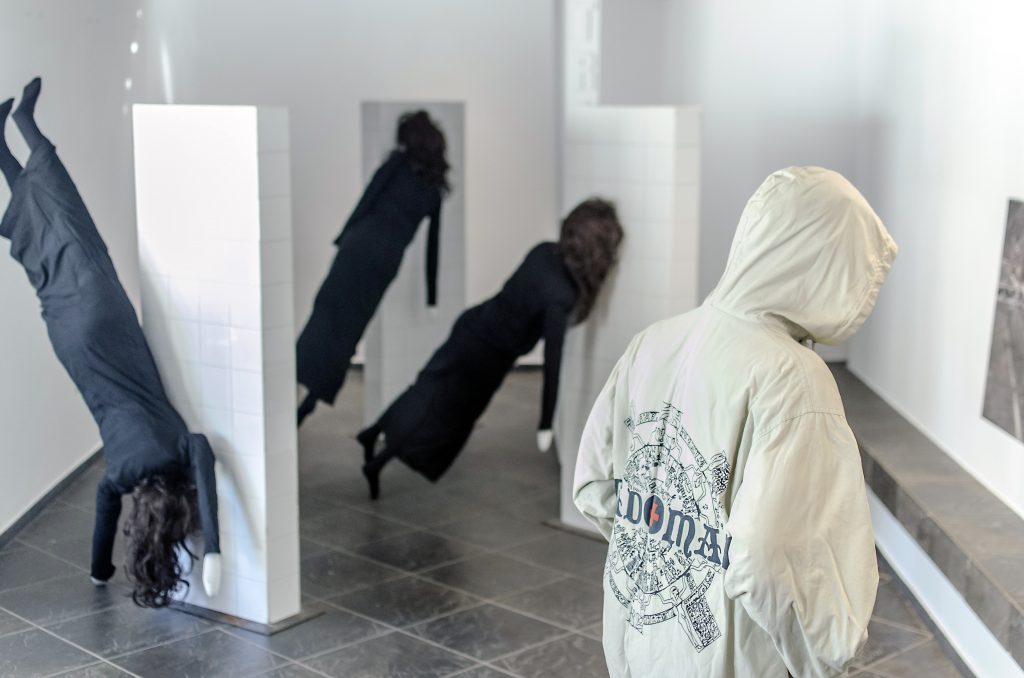
Text by: Sava Stepanov
The first two decades of the 21st century are increasingly seen as the culmination of liberal capitalism, a period which saw the ruthless use of man. Big capital seeks to subordinate the potential of the entire humanity to its own philosophy of profit. Forbes recently reported that 237 people own more capital than the rest of the world. This wealth unfortunately comes from the widespread misuse of the greatest achievements of modern science and technology. This combination of rampant capitalism and technology ushered in a global system of control. It was this kind of control-based society that George Orwell envisioned in the late 1930s in his novel 1984, so accurately portraying the nature of today’s social reality. In this context, the following prediction from the book should not be underestimated: ‘We may be heading not for general breakdown but for an epoch as horribly stable as the slave empires of antiquity.’ [1]
In such circumstances, art and artists are looking for right answers. They are difficult to find because the system of the so-called cultural industries places profit above aesthetic and ethical messages. This is why French theorist Nicholas Burriaud speaks of the ‘relational aesthetics’ by which art establishes a relationship with everyday life by providing a space that is partly protected from uniform behavior and preserving the utopian tension of art. On the other hand, Dr Sanja Mladenov Kojić notes that ‘the contextual art, which depends on the interpersonal relations and argumentative linking of artworks and reality, is a topical art trend’. Such a highly complex and elusive art scene does not represent common ideas about the meaning of existence, but aims at the many diverse existential conditions of our multicultural and global world. Moreover, Carolyn Christov-Bakargiev, a curator of the world-famous exhibition dOCUMENTA (13) in Kassel, writes that she is no longer sure that art in its present form will continue to exist in the decades to come. For, art is forced to infiltrate the flows of information systems, science and technology, etc.
The
very title of this exhibition Quo Vadis,
Homini?, involving artworks by six Serbian artists, suggests their concern
for the man of today. The organizer intentionally opted for the figurative mode
of presentation, relying on the Aristotelian view that mimesis is not a mode of
behavior or imitation, but rather a rhetorical model. In their works, the selected Serbian artists
respond to the state of the world and the rigid use of man in the early decades
of the 21st century. Artists take their own perceptions of personal
vulnerability as a basic characteristic of our age (Dragan Vojvodić, Goran
Despotovski); show understanding for the preservation of the integrity of an
alienated and lonely personality in urban environments (Radovan Jokić);
recognize the manifestations of transitional present based on quoting and
transposing works from the history of (film) art (Nemanja Nikolić); identify
and accentuate the tragedy of man as a consumable resource in the environment
of highly developed liberal capitalism (Rados Antonijević) and make predictions
for a future in which human destinies will be repeated in the ‘lives’ of
computer anthropoids (Nataša Teofilović). In this regard, it is important to
note that all individual works insist on respecting the cultured aesthetic
system and ethical principles. For art, even in the moments of relativization
of its own effectiveness and meaning, is still a kind of human refuge and a
‘safe haven’ for the preservation of universal dialectical meaning.
[1] Stanko Crnobrnja, Orwellian Cultural Summer, Politika, Culture Supplement, Saturday, June 29, 2019.
